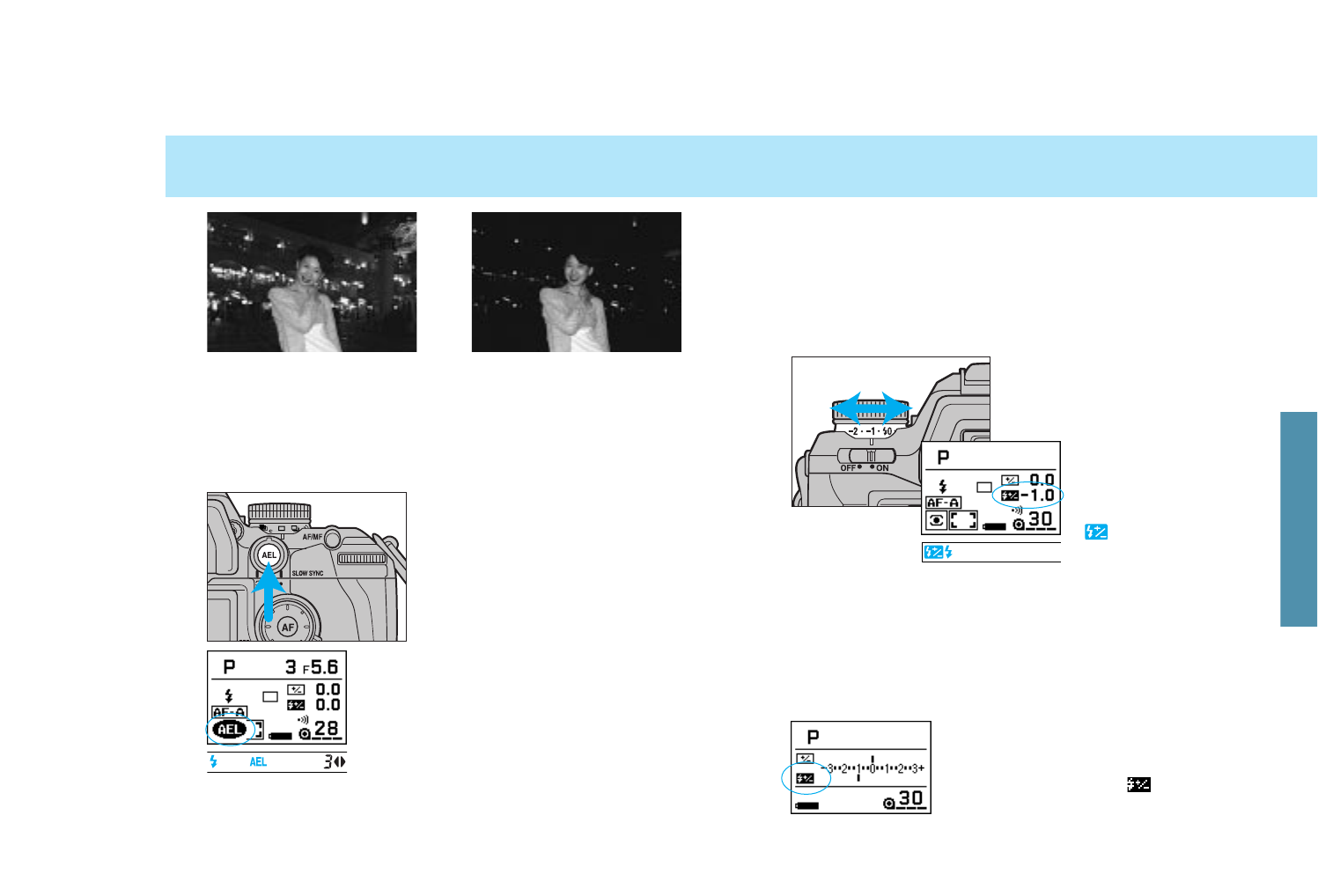
103102
Slow-shutter sync Conventional flash
In P and A-modes, slow-shutter sync sets a slower shutter speed to
increase the background or ambient exposure in a flash picture. Flash
output is automatically decreased to maintain correct subject exposure.
1. Raise the built-in flash or turn
the accessory flash on.
2. While pressing the AE-lock but-
ton, press the shutter-release
button all the way down to take
the picture.
• AEL and the locked exposure will be displayed
in the display and the viewfinder.
• The shutter speed may not be reduced if the
background is bright or a large aperture is set
(A-mode).
• Use a tripod if the shutter speed becomes too
slow to allow sharp, hand-held pictures.
• Custom 10-2 lets you press the AE-lock button
once to activate slow-shutter sync. Press again
to cancel (p. 168).
Use flash compensation to increase or decrease the output of the
built-in or an attached accessory flash up to +/–2 EV in 1/2EV incre-
ments. This function is especially useful when shooting with slide
film, because of the film’s low tolerance for exposure error.
Flash compensation changes the flash exposure by the amount set
relative to the ambient exposure.
Rotate the flash-compensation
dial to the desired compensation
value.
• Selected compensation
values appear in the naviga-
tion display.
• appears in the
viewfinder.
• Flash compensation does not modify the output of a flash set to man-
ual flash or connected to the PC terminal.
• Flash compensation has no effect on the ambient light exposure.
• Flash compensation and exposure compensation can be used togeth-
er. See page 80 for their comparison.
• Over exposure, using flash compensation, may not be possible with
the built-in flash.
• If you press the display-selection button, the
meter-index display appears in the navigation
display. The flash compensation index is shown
in the lower mid-area with .
SLOW-SHUTTER SYNC FLASH COMPENSATION
FLASH


















